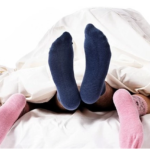Smoking Marijuana May Cut Migraine Pain by Nearly Half, Study Suggests
Published on November 27, 2019 at 11:40 AM by Mc Noel Kasinja
Cannabis has benefits when it comes to relieving a stressful headache or migraine, researchers have found.
Since cannabis is made up of over 100 cannabinoids, this finding suggests that different cannabinoids or other constituents like terpenes may play the central role in headache and migraine relief.
Inhaled cannabis reduces self-reported headache severity by 47.3 per cent and migraine severity by 49.6 per cent, said the study.
“We were motivated to do this study because a substantial number of people say they use cannabis for headache and migraine, but surprisingly few studies had addressed the topic,” said study lead author Carrie Cuttler, Assistant Professor at Washington State University in the US.
For the study, published in the Journal of Pain, the researchers analysed archival data from the Strainprint app, which allows patients to track symptoms before and after using medical cannabis purchased from Canadian producers and distributors.
The information was submitted by more than 1,300 patients who used the app over 12,200 times to track changes in headache from before to after cannabis use, and another 653 who used the app more than 7,400 times to track changes in migraine severity.
During the research, the research team saw no evidence that cannabis caused “overuse headache,” a pitfall of more conventional treatments which can make patients’ headaches worse over time.
However, they did see patients using larger doses of cannabis over time, indicating they may be developing tolerance to the drug.
The study found a small gender difference with significantly more sessions involving headache reduction reported by men (90.0 per cent) than by women (89.1 per cent).
The researchers also noted that cannabis concentrates, such as cannabis oil, produced a larger reduction in headache severity ratings than cannabis flower.
The researchers acknowledge the limitations of the Strainprint study since it relies on a self-selected group of people who may already anticipate that cannabis will work to alleviate their symptoms, and it was not possible to employ a placebo control group.


